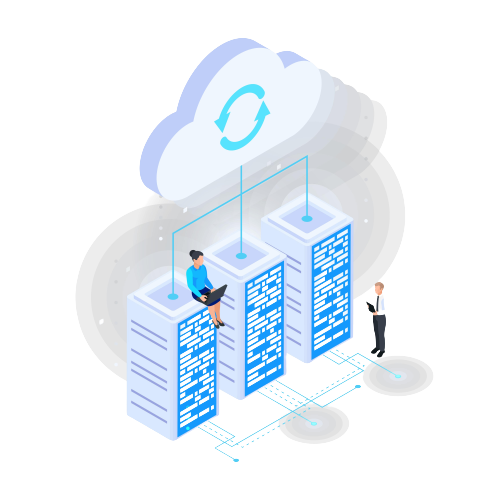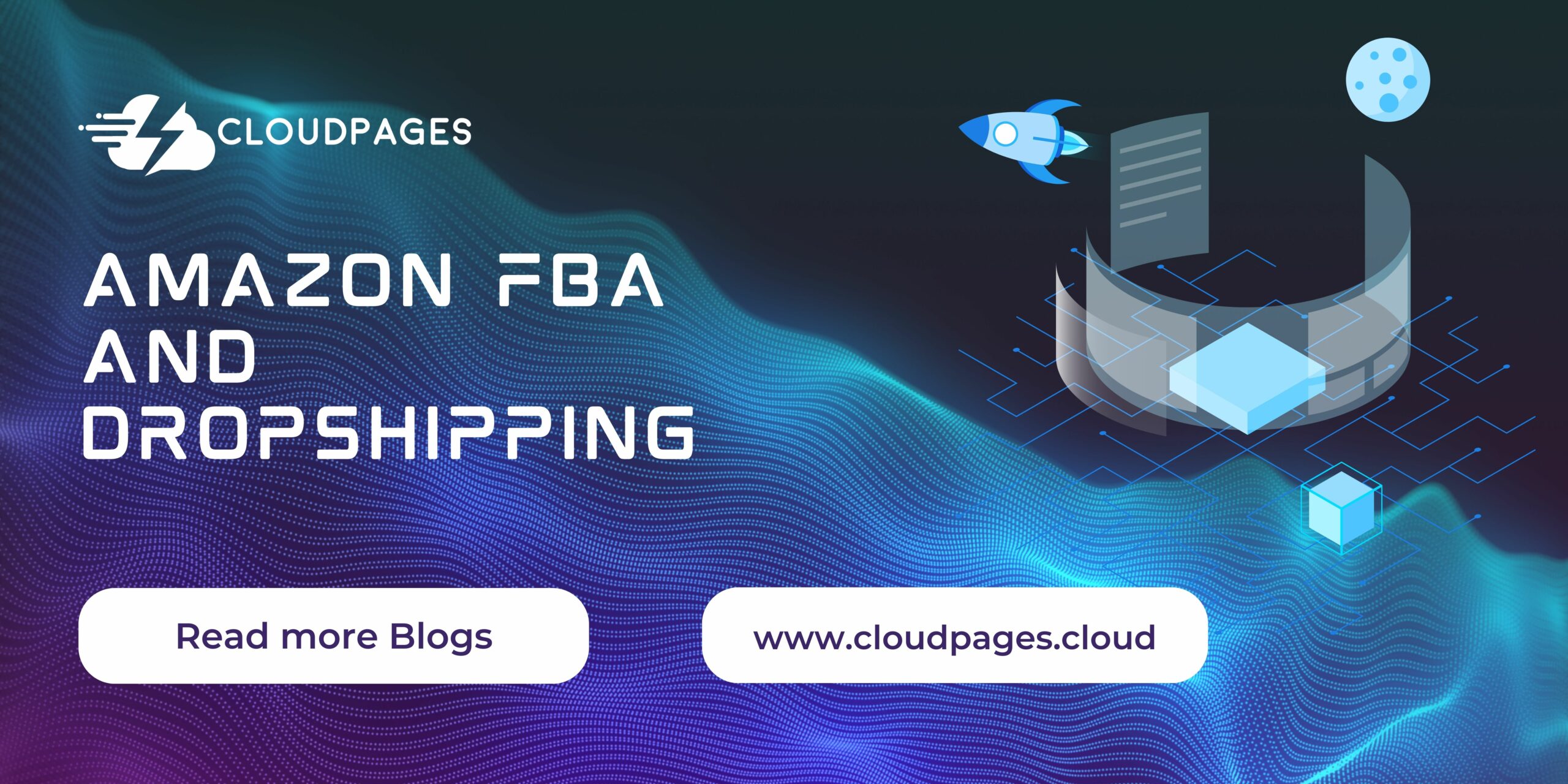E-commerce has become a thriving arena for entrepreneurs seeking to capitalize on the global reach of online marketplaces. Two popular business models within this space are Amazon FBA and drop shipping. Both approaches offer unique advantages and challenges, and deciding between them is a critical aspect of an entrepreneur’s e-commerce strategy. In this article, we’ll conduct an in-depth analysis of Amazon FBA and dropshipping, exploring their key features, benefits, drawbacks, and considerations to help entrepreneurs make informed decisions for their business ventures.
Table of Contents
Amazon FBA: Streamlined Fulfillment with Amazon’s Muscle

Amazon FBA is a fulfillment service offered by Amazon, allowing sellers to store their products in Amazon’s warehouses. When a customer places an order, Amazon picks, packs, and ships the product on behalf of the seller. This model simplifies logistics and customer service, letting entrepreneurs focus on product sourcing, marketing, and scaling their businesses.
Advantages:
- Efficient Fulfillment: Amazon FBA handles storage, packing, and shipping, reducing the logistical burden on sellers.
- Prime Eligibility: FBA products are often eligible for Amazon Prime, attracting a larger customer base with fast and reliable shipping.
- Customer Trust: The association with Amazon enhances customer trust and credibility.
- Scalability: FBA allows for easy scaling as sellers can tap into Amazon’s extensive infrastructure.
Considerations:
- Fees: FBA involves fees for storage, picking, packing, and shipping, impacting overall profit margins.
- Inventory Management: Sellers must carefully manage inventory to avoid storage fees and stockouts.
- Limited Control: Sellers relinquish some control over the fulfillment process to Amazon.
Dropshipping: Low Overheads and Flexibility

Dropshipping is a retail fulfillment method where sellers don’t keep the products they sell in stock. Instead, they purchase items from a third party and have them shipped directly to the customer. This model minimizes upfront costs and inventory management responsibilities.
Advantages:
- Low Initial Investment: Dropshipping requires minimal capital as sellers only purchase products when they make a sale.
- Low Overheads: No need for storage or fulfillment centers, reducing operational costs.
- Product Variety: Easy to test and offer a wide range of products without the need for inventory commitment.
- Location Flexibility: Dropshipping can be managed from anywhere, requiring only an internet connection.
Considerations:
- Quality Control: Sellers may face challenges ensuring the quality of products and timely shipping from suppliers.
- Lower Profit Margins: Competition is high, and profit margins can be lower due to price pressure.
- Dependency on Suppliers: Success is contingent on reliable and efficient suppliers.
- Limited Brand Control: Sellers have less control over branding and packaging.
Differences between Dropshipping and Amazon FBA
| Aspect | Dropshipping | Amazon FBA |
|---|---|---|
| Fulfillment Process | Products shipped directly from supplier to customer | Amazon stores, picks, packs, and ships products for you |
| Initial Investment | Low, as there’s no need to purchase inventory upfront | Higher, as inventory purchase and storage fees apply |
| Overhead Costs | Minimal, no storage costs or fulfillment center fees | Higher, with storage fees, pick-and-pack fees, etc. |
| Product Variety | Easy to test and offer a wide range of products | Products need to be purchased and stored in advance |
| Profit Margins | Potentially lower due to increased competition | Potential for higher margins with control over pricing |
| Control Over Branding | Limited, as branding is often controlled by suppliers | More control over branding and packaging |
| Scalability | Easier to scale quickly with low initial investment | Scalable, but requires managing inventory effectively |
| Shipping Times | Variable and dependent on supplier and location | Faster shipping times, especially for Prime-eligible products |
| Customer Trust | May face challenges with trust due to longer shipping times and potential quality issues | High customer trust with Amazon’s reputation and Prime benefits |
| Location Flexibility | Can be managed from anywhere with an internet connection | Requires proximity to Amazon fulfillment centers |
| Quality Control | Challenges ensuring product quality and timely shipping from suppliers | Amazon handles quality control and shipping processes |
| Logistical Effort | Requires active management and communication with suppliers | Streamlines logistical processes, reducing manual effort |
| Risk Management | Lower risk due to minimal upfront investment | Higher risk due to inventory investment and storage fees |
Insights into Choosing Between Amazon FBA and Dropshipping
Embarking on an e-commerce journey involves strategic decision-making, and the choice between Amazon FBA and Dropshipping is a pivotal aspect that requires careful consideration. As entrepreneurs delve deeper into this decision-making process, additional insights can shed light on the complexities and nuances of each model.
Understanding Risk Tolerance
One crucial factor to weigh is an entrepreneur’s risk tolerance. Dropshipping, with its low entry barriers and minimal upfront costs, is often seen as a lower-risk option. Entrepreneurs can test markets and products without substantial financial commitments. Conversely, Amazon FBA involves greater financial investment, making it a higher-risk endeavor. However, with higher risk comes the potential for higher rewards, especially when leveraging Amazon’s extensive customer base.
Navigating Brand Control
Consideration of brand control is paramount. Entrepreneurs who value control over branding, packaging, and customer experience may find Dropshipping more aligned with their vision. In contrast, Amazon FBA, while offering the advantages of Prime eligibility and enhanced customer trust, may require some concessions in terms of brand control as Amazon manages the fulfillment process.
Flexibility and Adaptability
Flexibility plays a significant role in the dynamics of e-commerce. Dropshipping, with its agility and adaptability, allows entrepreneurs to quickly respond to market trends, test new products, and adjust strategies on the fly. Amazon FBA, while scalable, may involve more structured planning due to inventory management and potential lead times, limiting the immediate adaptability seen in Dropshipping.
Analyzing Profit Margins
Profit margins are a critical consideration. Dropshipping often faces challenges in maintaining high profit margins due to intense competition and lower barriers to entry. Amazon FBA, on the other hand, offers the potential for healthier margins, especially when selling high-demand products efficiently through Amazon’s platform.
Hybrid Approaches and Market Trends
Entrepreneurs are increasingly adopting hybrid approaches, leveraging both models strategically. They might initiate product testing through Dropshipping and transition successful products to Amazon FBA for scaled operations. The choice between the models can also be influenced by evolving market trends, with entrepreneurs staying attuned to consumer behaviors and preferences.
Customer Service Dynamics
Customer service is an integral part of any e-commerce business. Entrepreneurs must weigh the customer service dynamics associated with each model. Dropshipping may require active communication with suppliers to address issues, while Amazon FBA leverages Amazon’s customer service infrastructure but may involve navigating Amazon’s policies and procedures.
Choosing Between Amazon FBA and Dropshipping: Factors to Consider
- Business Goals: Consider your long-term business goals and whether scalability or low initial investment is a priority.
- Control vs. Convenience: Evaluate how much control you want over the fulfillment process. FBA offers convenience, while drop shipping provides more control.
- Product Niche: Certain product niches may be better suited for one model over the other. For example, high-margin, niche products may be more viable with FBA, while dropshipping may be suitable for testing a wide range of products.
- Financial Considerations: Assess your financial capacity. FBA requires more upfront investment, while drop shipping minimizes initial costs.
- Logistical Effort: Consider the level of logistical effort you are willing to invest. FBA streamlines the process, while dropshipping requires more active management.
FAQs
How does control over the fulfillment process differ between Amazon FBA and Dropshipping?
Amazon FBA streamlines the fulfillment process with Amazon handling storage, packing, and shipping. In Dropshipping, sellers have more control but may face challenges ensuring product quality and timely shipping from suppliers.
Which model offers faster scalability for an e-commerce business?
Amazon FBA is generally considered more scalable due to its integration with Amazon’s extensive infrastructure. Dropshipping allows for quick scaling but may require active management as the business grows.
What are the key advantages of Dropshipping?
Dropshipping advantages include low initial investment, a wide product range without holding inventory, and location flexibility as the business can be managed from anywhere.
What are the primary advantages of using Amazon FBA?
Amazon FBA offers efficient fulfillment, eligibility for Prime benefits, enhanced customer trust due to Amazon’s reputation, and scalability as sellers tap into Amazon’s extensive customer base.
Can an entrepreneur combine elements of both models in their business strategy?
Yes, entrepreneurs can adopt a hybrid approach. For example, using Dropshipping to test new products quickly and transitioning successful items to Amazon FBA for enhanced scalability and control.
Conclusion
In the ever-evolving landscape of e-commerce, the choice between Amazon FBA and Dropshipping serves as a critical decision for entrepreneurs seeking to establish and scale their online ventures. Both models present distinct advantages and challenges, catering to different business goals, preferences, and resources.
Dropshipping, with its low initial investment and flexibility, offers an entry point for those seeking to test a wide range of products without the burden of inventory management. It suits entrepreneurs who value minimal upfront costs, location independence, and the ability to swiftly adapt to market trends. However, the model comes with its own set of challenges, including potential quality control issues, lower profit margins, and dependency on reliable suppliers.
On the other side, Amazon FBA provides a streamlined fulfillment process within the e-commerce giant’s ecosystem. Entrepreneurs benefit from efficient logistics, the trust associated with the Amazon brand, and potential eligibility for Prime benefits. FBA is an excellent fit for those prioritizing scalability, ease of use, and the advantages of Amazon’s extensive infrastructure. However, it requires a higher upfront investment, involves additional fees, and relinquishes some control over the fulfillment process to Amazon.
The decision between Dropshipping and Amazon FBA hinges on individual business objectives, risk tolerance, and the desired level of control over the entire process. Entrepreneurs must weigh factors such as financial capacity, logistical effort, and the nature of their chosen products or niche.



